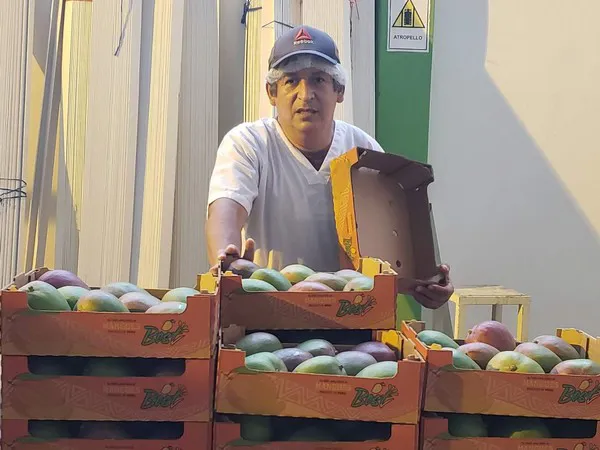In an interview, Cesar Morocho Marchan, a member of the NMB Council and current president of the Peruvian Association of Mango Producers and Exporters, spoke about the work carried out by the National Mango Board, a fundamental entity established to promote the consumption of mangoes in the United States.
Morocho Marchan is a specialist in the production and marketing of mangoes with a broad professional background. He managed the Association of Small Producers of Mango of Alto Piura (APROMALPI) between 2005 and 2008, and afterward the Piura's Organic Banana Producer Central (CEPIBO), both under the Fair Trade seal.

Cesar Morocho Marchan
Area and Production in Peru
“According to the latest censuses, Peru has nearly 34,000 hectares devoted to the production of mangoes. Piura concentrates 70% of the country's production, Lambayeque 12%, and Casma 18%. Most of our mangoes are of the Kent variety,” Morocho stated.
“We have sustained growth at the production level. Last year 235,000 tons were sold, just over 10,000 containers. This year we have had some problems with the weather and water, but I think we'll be producing 200,000 to 207,000 tons,” he added.
“Land ownership stands at 5 hectares, more or less, so if we have 34,000 hectares devoted to this production we can say there are about 6,800 producers,” he said.

Russia and the Middle East: very interesting markets for mangoes
Regarding the internationalization of Peruvian mangoes, Morocho said: “The Middle East market is very good and interesting, to the extent that we can arrive with quality fruit. We have already been working with the Russian market; in fact, there are already direct exports to this country, but we also consider Rotterdam as the main port of entry. In the case of Russia, it is necessary to strengthen trade relations much more, but they are potential markets for our country.”
Possibilities in China and Japan
“The markets of Japan and Korea are extremely demanding in terms of fruit quality, but it is not impossible to work with them. In the future, we should have some joint strategy by air, and it could be an interesting experience," Morocho said.
“The Chinese market is always waiting for the fruit in the Chinese New Year, which is usually around the last week of January and the first of February. That is when the production of Piura is ending and the fruit has high degrees of ripening. In addition, the trips to take the fruit there last more than 35 days, so it's just too dangerous. But we have to work in the Chinese markets to increase consumption of this fruit before the New Year,” he said.
For more information:
National Mango Board
www.mango.org
